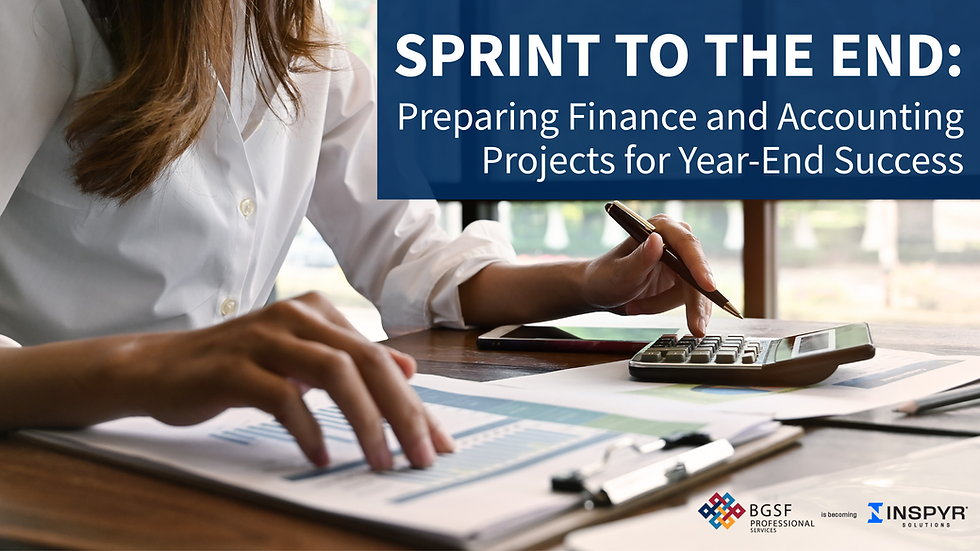Cash Flow Optimization Ahead of Year-End: Tips for Businesses of All Sizes
- bberrodin
- Oct 2
- 2 min read

As the year winds down, many businesses are focused on closing the books, preparing for audits, and setting financial goals for the year ahead. But one area that deserves special attention during this time is cash flow optimization. Whether you’re a startup, a mid-sized organization, or a large enterprise, healthy cash flow ensures stability, flexibility, and confidence moving into the new year.
Why Cash Flow Matters Most at Year-End
Year-end often brings unique financial pressures: bonus payouts, holiday expenses, increased receivables, and preparation for tax season. Without a strong handle on cash flow, businesses risk shortfalls that can limit growth opportunities or even disrupt daily operations. Proactively managing cash flow during this critical period helps organizations:
Cover expenses without dipping into emergency reserves.
Reduce debt and avoid unnecessary financing costs.
Position for strategic investments in the new year.
Maintain financial agility amid economic uncertainty.
Practical Tips to Optimize Cash Flow
1. Accelerate Receivables
Encourage faster payments by offering small discounts for early settlements, sending invoices promptly, and leveraging automated reminders. Digital payment tools can also streamline the process and shorten collection cycles.
2. Revisit Payables Strategy
Take advantage of vendor payment terms without straining relationships. If possible, negotiate extended terms or staggered payments to better align with your revenue flow.
3. Manage Inventory Wisely
Excess inventory ties up capital. Conduct a year-end inventory audit to identify slow-moving products, optimize ordering, and reduce carrying costs.
4. Cut Non-Essential Expenses
Audit subscriptions, services, and overhead costs. Eliminating underused resources, even temporarily, can free up working capital for more pressing needs.
5. Forecast and Stress-Test Scenarios
Prepare cash flow forecasts that factor in best-case, worst-case, and likely scenarios. This ensures you’re ready to adjust quickly if revenue dips or expenses rise unexpectedly.
6. Leverage Tax Planning
Strategic timing of expenses and deductions can improve liquidity. Work with your accounting team to ensure you’re taking advantage of year-end tax benefits without compromising cash flow.
7. Consider Temporary or Project-Based Support
Bringing in consultants or short-term staff during year-end close can streamline operations without the long-term commitment of full-time hires, optimizing labor costs while ensuring deadlines are met.
Setting the Stage for 2026
Optimizing cash flow before year-end is about building resilience for the year ahead. Businesses that manage their working capital effectively can reduce stress, take advantage of new opportunities, and start the year positioned for growth.
At BGSF, we help businesses of all sizes prepare for these transitions by providing finance and accounting consultants, project-based staffing, and external staffing support to ensure smoother year-end reconciliations and stronger cash flow management strategies. Contact us today!



Comments